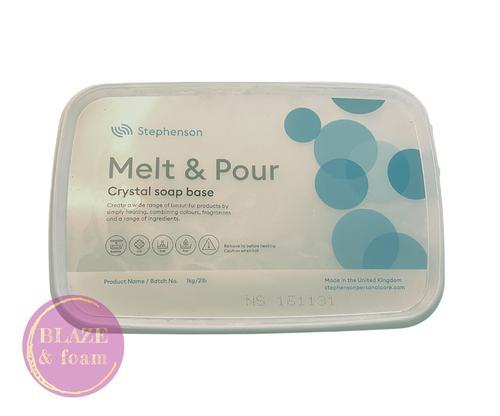A Beginner’s Guide to Soap Making Supplies

Have you always wanted to create your own
soap? Perhaps you’re keen to sell your hand-made creations at local markets or
are looking for a unique gift to give to family and friends.
There are a few different methods that you can use to craft home-made soap. While making soap from scratch can be difficult, using a melt and pour mix is relatively simple. All that you will require is a few specialist ingredients, a couple of handy tools, and a dash of creativity.
You don’t have to be an expert crafter to make beautiful melt and pour hand-made soaps. Armed with knowledge and high-quality soap making supplies, you’ll be well on your way to producing one-of-a-kind creations that will bring joy to you and the receiver. Continue reading to discover more about the soap making process and how to source the best soap making supplies.
Melt and Pour
Melt and pour soap bases are a very popular option for those who are just starting out on their soap making journey. Making soap using a melt and pour base is very easy and provides plenty of opportunities to experiment with colour and scent.
The main ingredient you will need is the base itself. A melt and pour base will have already gone through the process of saponification, a chemical reaction in which fats and oils interact with lye to form soap. This means that there is no cure time required, which is why this process is often favoured by beginners.
In terms of soap making supplies, you will need only a few tools and ingredients, including the base, a large knife, a microwave, your chosen mould, and any skin safe dye or skin-safe fragrance you plan on adding.
To create your home-made soap, simply slice the base into smaller pieces, pop in the microwave until melted, add your dye and fragrance, and pour into your mould. Be sure to pour slowly to prevent bubbles from appearing. The mould can then be covered with plastic and left to sit at room temperature or in the fridge. Voila! Your melt and pour soap is done.
Liquid Soap
Making liquid soap is just as simple and rewarding.
As is the case with the melt and pour method, the main ingredient you will need is the base itself. When deciding on a base, look for a product that is free from parabens, mineral oil compounds, sulfates, glycols, and phthalates. It's always a good idea to opt for eco-friendly ingredients that have been suitably tested when you are creating anything that is going to be used on the skin.
To create your own liquid soap, just add a water based colourant and your choice of essential oils or skin safe fragrance to the liquid base. Stir well until combined and thicken using a salt and water mixture if you like. Simple, isn’t it?
Guide to Using Dyes and Fragrances
There are many differences between creating beautiful soap products and run-of-the-mill varieties that you could buy at your local supermarket. Commercially made soap uses different ingredients, with a focus on mass-production. Home-made soap, on the other hand, can be made by following one of two methods — cold process or melt and pour. Both of these place an emphasis on craft and using ingredients that will nourish your skin.
When it comes to dye, it’s essential to use a product that is specifically designed for soap making, regardless of whether you are making a liquid or solid product. Be sure to always read fragrance and dye instructions carefully so that you know exactly how much to add.
Try experimenting with different colour and scent combinations to see what you discover!
Sourcing Soap Making Supplies
Making your own soap can be a therapeutic experience. It takes time and skill to create handmade soap, and at the end of the process, you want to be left with a unique product you’re proud of. With that in mind, the first important step of your soap making journey is sourcing soap making supplies.
Ensure that your supplier has enough stock to meet your needs. If you are making soap as a creative hobby, this shouldn’t be a problem. However, if you are running a business, you need to have confidence that your supplier will be able to provide the high-quality products you rely on in a timely manner.
Keep in mind that many of the tools you will need can be found in your own kitchen, including scales, knives, measuring cups, and certain mixing containers. Making your own beautiful liquid and bar soaps does not have to be an expensive process, and the joy that your creations will bring will certainly make it worth the effort.
Post Your Ad Here
Comments